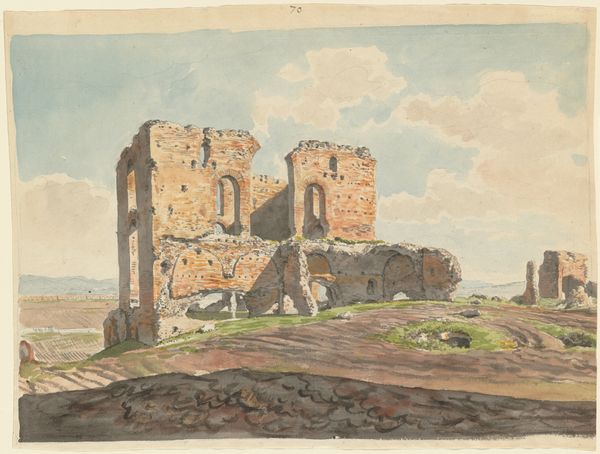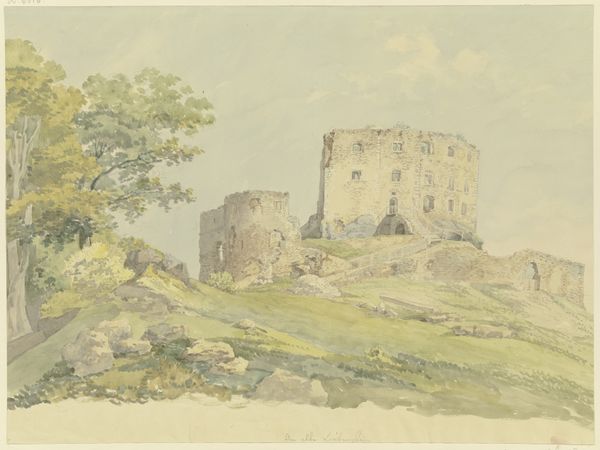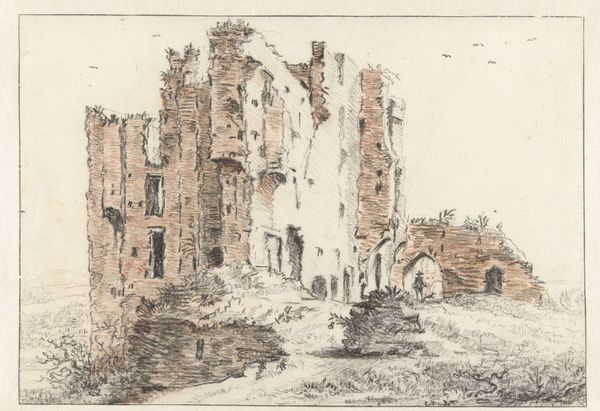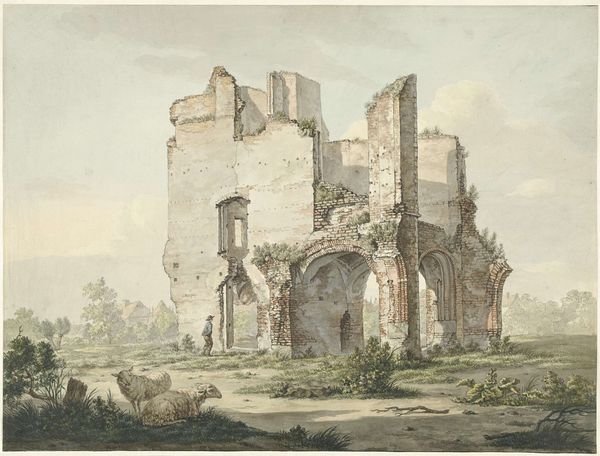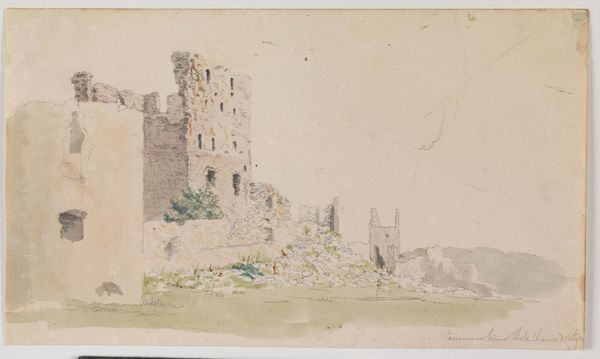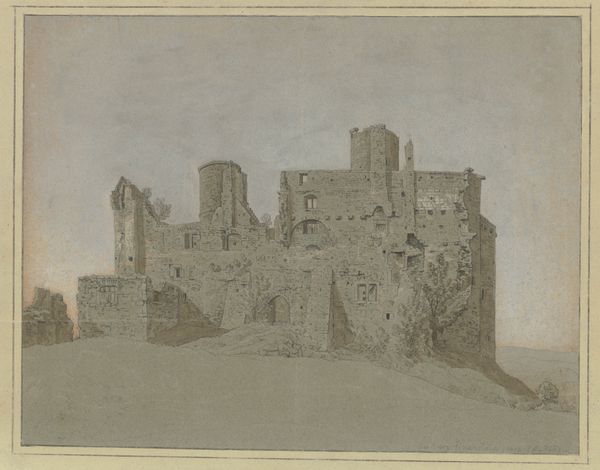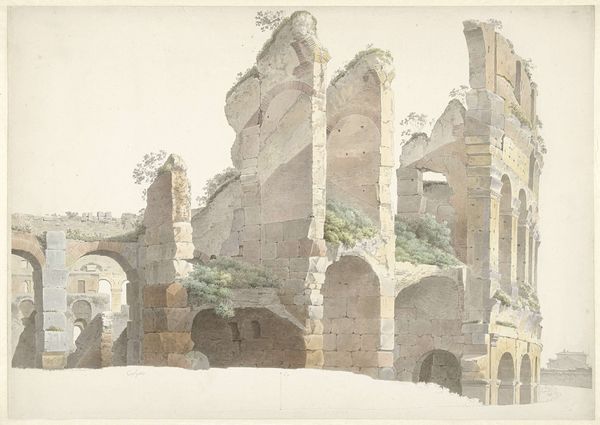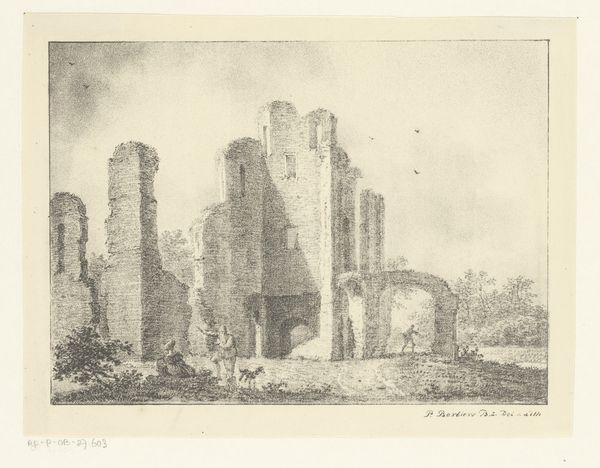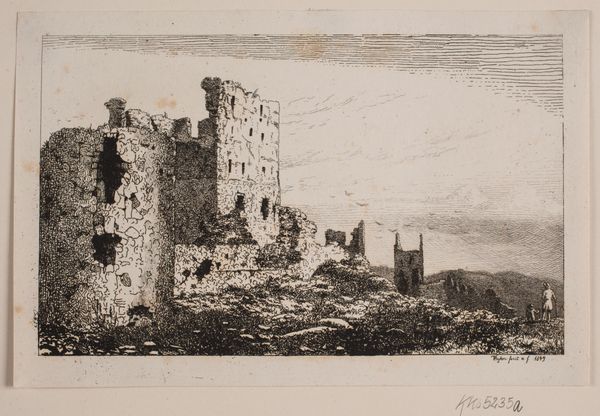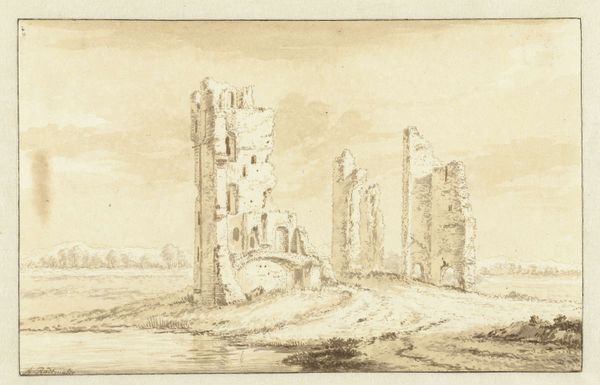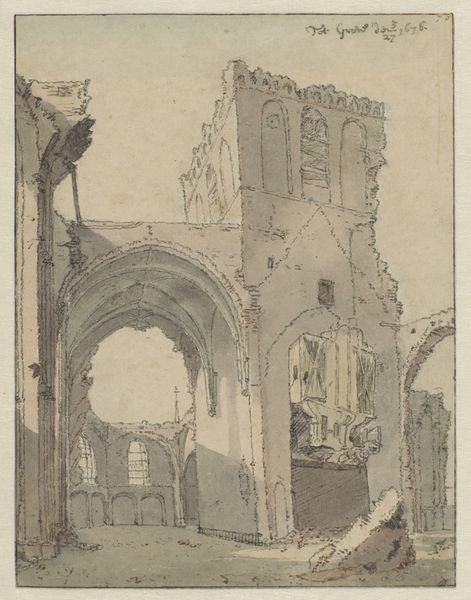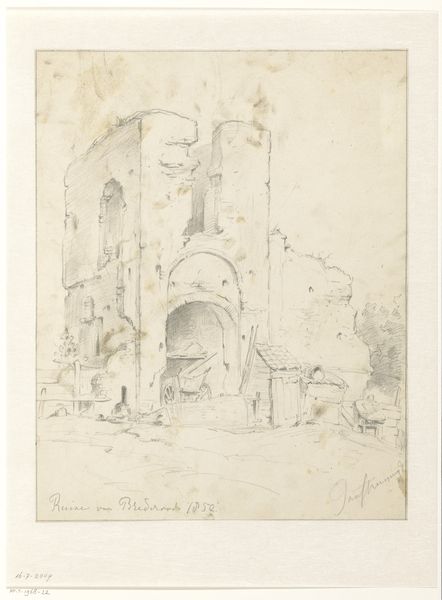
Eldena Abbey, near Greifswald in Swedish Pomerania 1814
0:00
0:00
drawing, watercolor, architecture
#
drawing
#
medieval
#
water colours
#
landscape
#
watercolor
#
romanticism
#
cityscape
#
watercolor
#
architecture
Dimensions: 159 mm (height) x 165 mm (width) (bladmaal)
Curator: Oh, this gives me chills. Ruins always whisper stories, don't they? Editor:Indeed. Here we have Caspar David Friedrich’s watercolor drawing, "Eldena Abbey, near Greifswald in Swedish Pomerania," dating back to 1814. What strikes you first? Curator: The lightness, actually. The gentle washes of color make the decay almost… peaceful. Like the building is returning to nature, with that lone ship sailing away in the background, perhaps implying that worldly glory is not important at all. I think it shows the power of his minimalist style. How does it read to you formally? Editor: Friedrich's meticulous arrangement draws the eye through the decaying gothic arches. Observe how he contrasts the soft washes of color in the sky with the defined linear architecture. It's semiotic language: the ruin as a signifier of time's relentless passage. The grass in front of the painting grounds me into the image. It brings everything together. Curator: Absolutely. The stark lines against those airy washes—it's like he's highlighting the ephemeral nature of human endeavor. A lot of his artworks focus on religion and the force of the all-powerful one. I wonder what went through his head while creating it. He was deeply romantic, and this definitely brings me back to what I think his style represents the most. Editor: Indeed. In its composition, the watercolor offers a structural echo of the past but there is almost something mystical about the way he draws our eye to the distance. Curator: Makes you wonder, doesn't it? What was there before? What will be there long after we're gone? This drawing leaves you suspended in time and space. Editor: A potent memento mori, certainly. His vision has always had a lot to unpack, especially for audiences looking to be confronted with our place in time and nature. Curator: It truly stays with you, even after you've left it. The emotional resonance of Romanticism, captured perfectly in faded brick and whispers of history. Editor: Indeed, it invites introspection of decay as much as invites conversation about compositional intentionality.
Comments
No comments
Be the first to comment and join the conversation on the ultimate creative platform.
